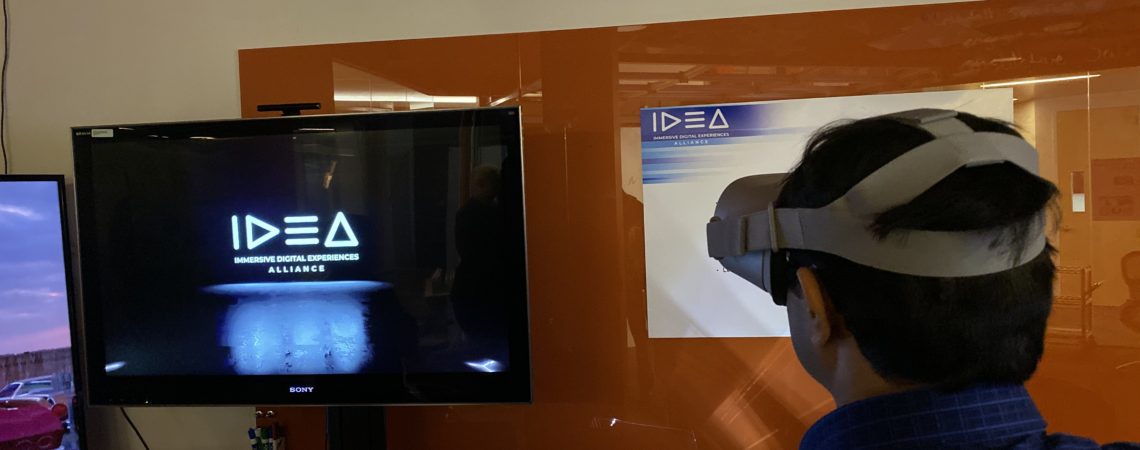The Immersive Digital Experiences Alliance (IDEA) released its first draft specification of the Immersive Technology Media Format (ITMF) on October 9th, 2019 at Display Summit Conference, hosted this year by CableLabs in Louisville, Colorado.
To give attendees a preview of the display-agnostic possibilities of the format, a series of demonstrations were created by Charter Communications and CableLabs engineers with the support of IDEA founding members. These new demonstrations of the ITMF standard were conducted over two days – October 8th and 9th at the same venue.
For the first-ever demonstrations, a set of ITMF image files was created, and then rendered into different display devices, including VR, stereoscopic and volumetric displays. The ITMF file included 3D models, textures, cameras and a wide variety of parameters within the scene graph of the file. In addition, multiple render targets were used to designate individual display profiles.
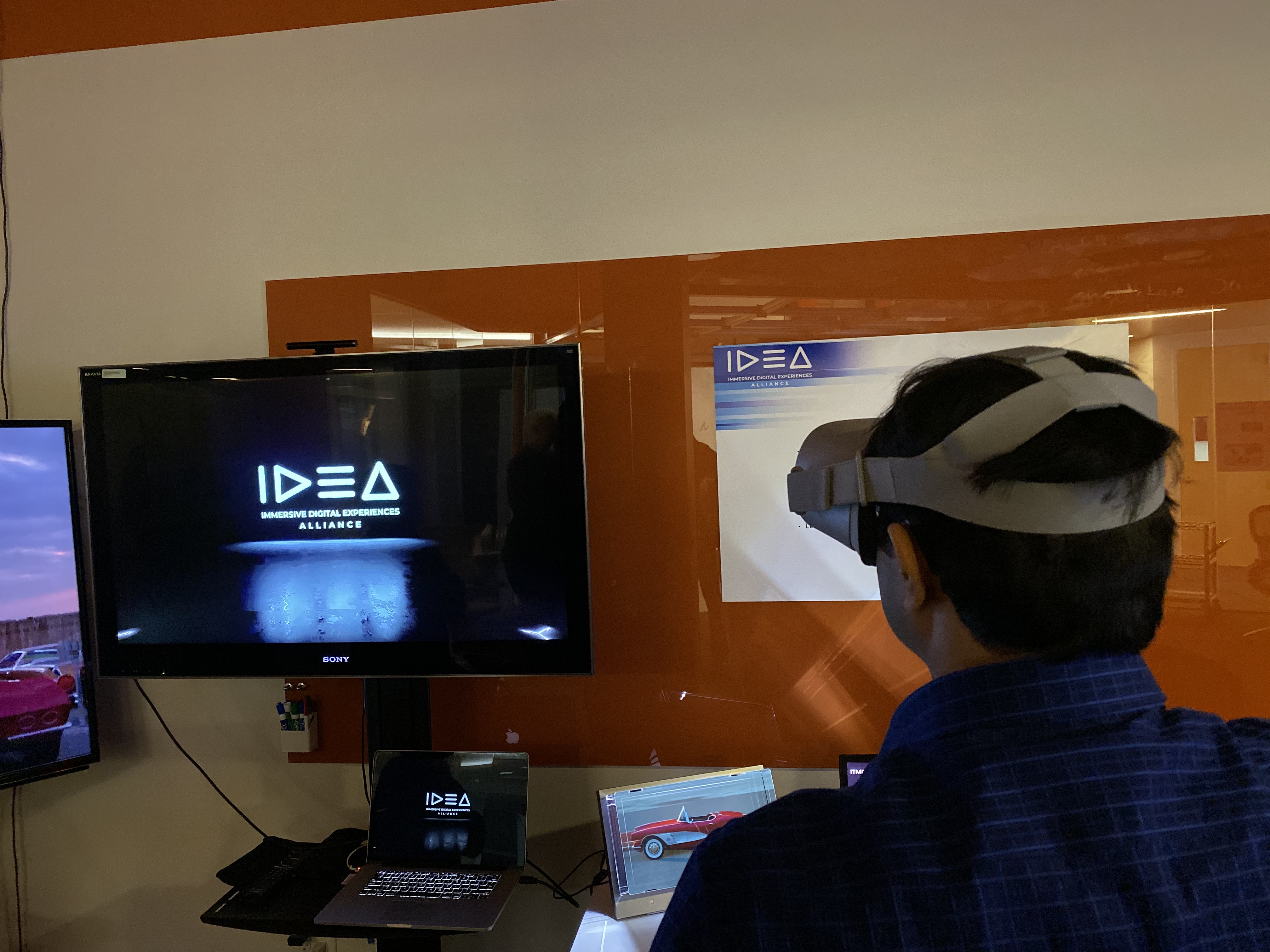
Demonstrations of ITMF running multiple display types at the Display Summit
As part of the demonstration an Oculus based VR Head-Mounted Display (HMD) was used to show three (11 second) stereo cube map animations, each with a resolution of 18,432 x 1536 pixels. These high-res animations represented different movie theaters and time periods to illustrate the progression of technology in media delivery. All were rendered using the OctaneRender unbiased render engine from OTOY, a founding member of IDEA, and supplier of the ORBX format upon which the release of ITMF is based. This was complimented by a video showing future uses of the ITMF format using XR based devices.
In addition, an HD 2D display and HD 3D TV video was created from the same ITMF file. Adding to this demonstration of the interoperability of the ITMF format, a Looking Glass Factory volumetric display was showing a 3D rendering of 42 different views from a camera setting and render target within the ITMF file itself.
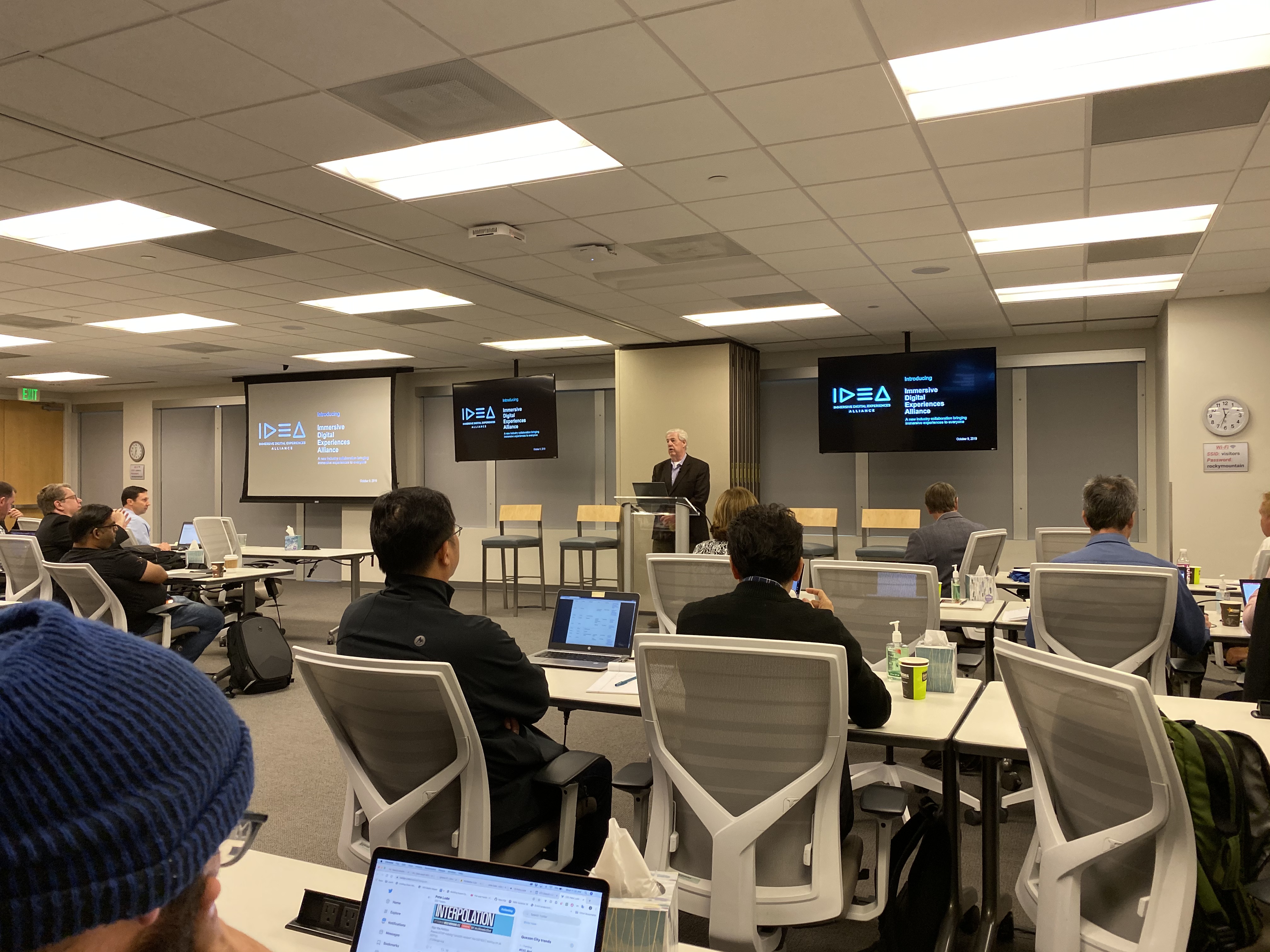
Pete Lude, IDEA chair and the October announcement of the ITMF draft specification
On hand to demo and showcase the future integration of light field imaging into the ITMF specification were Light Field Labs and Visby, both founding members of the IDEA Alliance. Demonstrations included playback of pre-recorded Light Field footage captured using a large camera array and image processing software from Visby. Representatives of Light Field Lab explained the how light field displays operate, using an example of the Mirascope as an optical analogy of the concept.
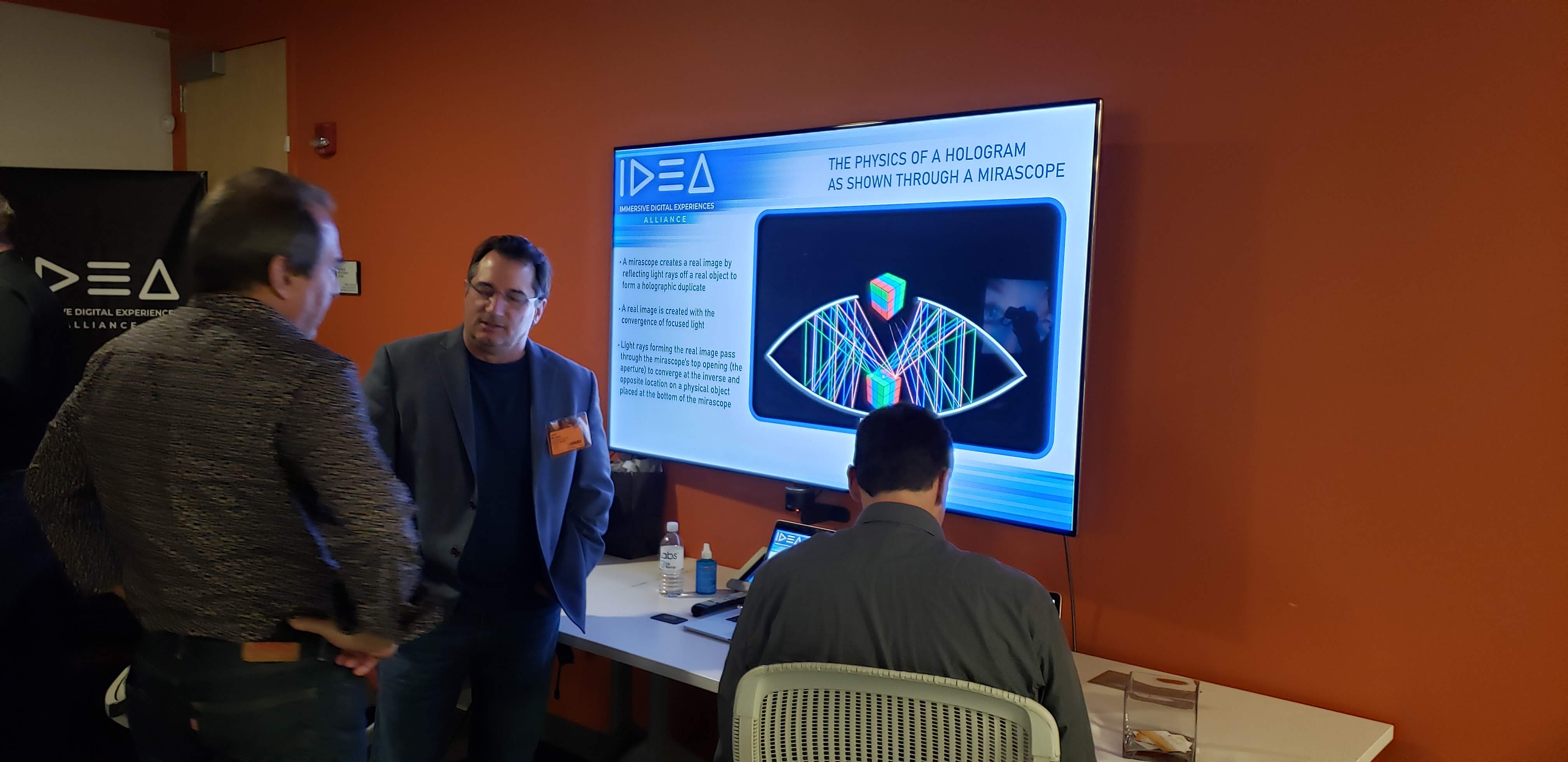
Light Field Lab demonstrating the physics of a Hologram as shown through a Mirascope.
Representatives from the Emerging Platforms and Technologies group within Charter Communications, another IDEA founding member, were also on hand to explain how media aware networks, rendering, streaming and delivery would be possible using the ITMF format.
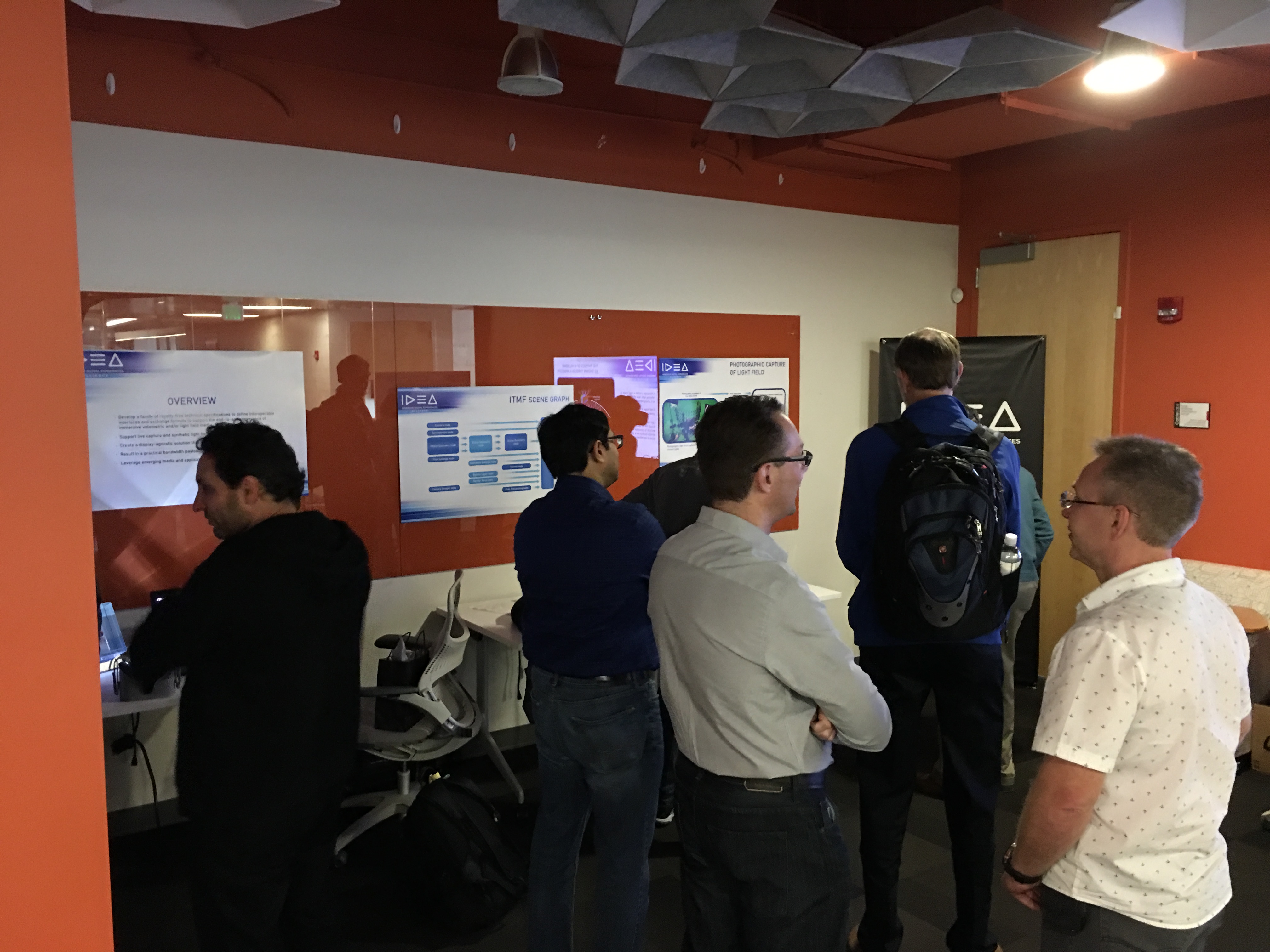
Members of IDEA and attendees discuss the ITMF format and immersive media delivery
Nearly 100 industry experts attended the ITMF demo over the two-day period, with copious questions and spirited discussions about the future of immersive imaging, and the role that ITMF is expected to play. Based on the enthusiastic response, IDEA is now beginning to plan for future demonstrations of immersive file interchange, and educational events to explain the ITMF specification in more detail. Be sure to join our mail list to keep posted on these upcoming events.

